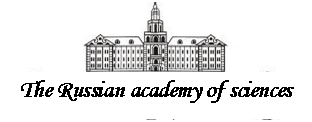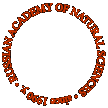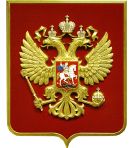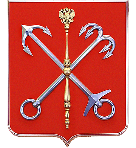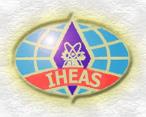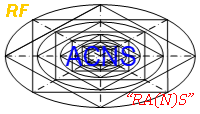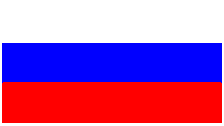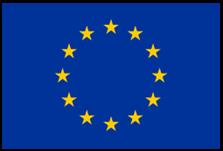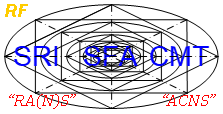

|
“The IInd international action [from the 01st of January 2013 y. to the 31st of December 2013 y.] |
|
|
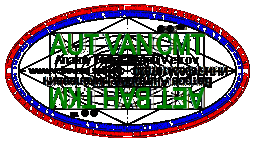
|
It is carried out according to the letter from the 27th of December 2011 y. №A26-13-808834 and the 27th of February 2013 y. №I-17399 |
|
|
|
Dear citizens of The Russian Federation and the foreign countries!
We invite You to take part in “The IInd international action
The table of contents of the print manuscript (the report on the scientific research work)
I. The table of contents of the print manuscript The normative references 25 The list of definitions 27 The list of abbreviations and symbols 30 The introduction 31 1. The analysis of the condition of problem and the setting of the tasks of research 34 1.1. The feasibility of development of the adaptive means of training 35 1.2. The feasibility of development of the technologies of the financial analysis 36 1.3. The specifics of proposed approach and the setting of the complex of research tasks 37 1.4. The stages of carrying out of research 38 1.5. The conclusions and comments on the first chapter 55 2. The creation of the environment of automated training with the properties of adaptation based on the cognitive models 56 2.1. The features of the organizational structure of the information-educational environment 58 2.2. The modifications in the organization and technology of training for the realization of adaptation 59 2.3. The structure of the environment of automated training with the properties of adaptation 62 2.4. The formal description of the adaptive information-educational environment based on theory of control 63 2.5. The conclusions and comments on the second chapter 65 3. The development of the cognitive modeling technology for the system analysis 66 3.1. The iterative cycle of the cognitive modeling technology 67 3.2. The technique of use of the cognitive modeling technology 68 3.3. The ways of representation of the structure of cognitive model 69 3.3.1. The representation of the structure of cognitive model by means 70 3.3.2. The representation of the structure of cognitive model by means 71 3.3.3. The representation of the structure of cognitive model by means 73 3.3.4. The basic volumetric representation of the structure of cognitive model by means 73 3.3.5. The additional volumetric representation of the structure of cognitive model by means 74 3.4. The algorithm of formation of the cognitive model 77 3.5. The technique of research of the parameters of the cognitive models of the subject of training and the means of training 78 3.6. The algorithm of processing of a posteriori data of research 79 3.7. The features of the structure of the cognitive models of the subject of training and the means of training 80 3.7.1. The structure of the cognitive model of the subject of training 82 3.7.2. The structure of the cognitive model of the means of training 83 3.8. The conclusions and comments on the third chapter 4. The complex of programs for the automation of the tasks of research of the information-educational environment 85 4.1. The structure of the complex of programs for the automation of the tasks of research 89 4.2. The adaptive means of training in the automated educational environment 90 4.2.1. The semantic model of saving and extracting of information 91 4.2.2. The adaptive representation of information fragments processor 94 4.3. The basic diagnostic module 95 4.4. The applied diagnostic module 96 4.5. The conclusions and comments on the fourth chapter 97 5. The development of the cognitive modeling technology for the financial analysis of the organizational structure 98 5.1. The dynamics and communications in the process of functioning of the organizational structure 99 5.2. The administrative-legal forms of existence of the managing subject 100 5.3. The features of the territorially distributed organizational structure 101 5.4. The features of the organizational structure of the educational (scientific) establishment 102 5.5. The distributed automated information-educational environment 103 5.6. The technique of formation of the normative-legal basis for the financial analysis of the organization 104 5.7. The technique of formation of the information basis for the financial analysis of the organization 105 5.8. The technique of additional check of the information basis for the financial analysis of the organization 106 5.9. The technique of creation and modification of the working plan of accounts 107 5.10. The technique of carrying out of the financial analysis of the condition of organization 108 5.11. The parametrical cognitive models block for the financial analysis of the organization 109 5.11.1. The cognitive model for the carrying out of the horizontal financial analysis of the organization 110 5.11.2. The cognitive model for the carrying out of the vertical financial analysis of the organization 111 5.11.3. The cognitive model for the carrying out of the trend financial analysis of the organization 112 5.12. The technique of research of the parameters of the cognitive model for the financial analysis of the organization 113 5.13. The algorithm of processing of a posteriori data of the horizontal, vertical and trend 114 5.14. The recommendations to the use of the cognitive modeling technology 115 5.15. The conclusions and comments on the fifth chapter 116 6. The specifics of research of the information environment of automated training 117 6.1. The system analysis of the information-educational environment 118 6.2. The financial analysis of the organizational structure 120 6.3. The technical, physiological, psychological and linguistic factors 121 6.4. The organization and plan of carrying out of the experiment at the research of parameters 123 6.5. The features of research of the parameters of the physiological portrait 127 6.5.1. The specifics of research of the parameters of the physiological portrait 128 6.5.2. The specifics of research of the parameters of the physiological portrait 131 6.6. The features of research of the parameters of the psychological portrait 132 6.6.1. The specifics of research of the parameters of the psychological portrait 134 6.6.2. The specifics of research of the parameters of the psychological portrait 137 6.7. The features of research of the parameters of the linguistic portrait 139 6.7.1. The specifics of research of the parameters of the linguistic portrait 141 6.7.2. The specifics of research of the parameters of the linguistic portrait 142 6.8. The economic factors of the efficiency of the formation of knowledge of the trainee 143 6.9. The organization and plan of carrying out of the experiment at the research of parameters 151 6.9.1. The information basis of accounting and the financial analysis of the organization 153 6.9.2. The specifics of the research of the parameters of cognitive model 154 6.9.3. The specifics of the research of the parameters of cognitive model 155 6.9.4. The specifics of the research of the parameters of cognitive model 156 6.10. The conclusions and comments on the sixth chapter 157 7. The statistical justification of the increasing in the efficiency of functioning 158 7.1. The features of the plan of carrying out of a series of experiments 160 7.2. The features of the primary processing of a posteriori data 164 7.2.1. The search of anormal outliers and artifacts in a posteriori data 165 7.2.2. The compliance to the analytical criteria of the normal law of distribution 172 7.2.3. The compliance to the graphical criteria of compliance to the normal law of distribution 176 7.3. The features of samples with a posteriori data 181 7.3.1. The parameters of the physiological portrait of the cognitive model of the subject of training 183 7.3.2. The parameters of the physiological and linguistic portrait of the cognitive model of the means of training 189 7.3.3. The parameters of the psychological portrait of the cognitive model of the subject of training 199 7.3.4. The parameters of the psychological portrait of the cognitive model of the means of training 218 7.3.5. The parameters of the linguistic portrait of the cognitive model of the subject of training 228 7.4. The justification of selection of a set of methods of statistical processing of a posteriori data 236 7.5. The correlation analysis 237 7.6. The regression analysis 263 7.6.1. A set of independent variables included into the analysis 264 7.6.2. The (non)standardized coefficients and equations of regression 271 7.6.3. The research of consistent change and relationship of variables 278 7.6.4. The analysis of the revealed dependencies between the predictors 306 7.6.5. The features and comparative characteristics of the obtained models 384 7.6.6. The analysis of residues of the linear model of multiple regression 389 7.6.7. The probability graphs for the model of multiple regression 411 7.7. The discriminant analysis 444 7.7.1. The descriptive statistics on all selected centroids 445 7.7.2. The test of equality of the average indicators by the groups for the revealing of the inclusion of variables 454 7.7.3. The research of the covariance and correlation of independent variables 456 7.7.4. The determination of the ranks of centroid of the selected classes 463 7.7.5. The eigenvalues of canonical discriminant functions 465 7.7.6. The features of the functions of classification of the discriminant analysis 467 7.7.7. The features of location of the centroids of classes 477 7.7.8. The features of geometric position of the centroids of classes 478 7.7.9. The analysis of presence of the ambiguously classified values 484 7.7.10. The analysis of the level of the quality of classification by means 485 7.8. The cluster analysis 486 7.8.1. The analysis of relationships between the variables 487 7.8.2. The analysis of the plan of agglomeration of variables 491 7.8.3. The analysis of a sequence of combining of variables 496 7.9. The multivariate scaling 498 7.9.1. The determination of the quantity of scales and the degrees of freedom 499 7.9.2. The finite coordinates of variables in the space of the functions of scaling 502 7.9.3. The relative and transformed ranges (distances) of independent variables 504 7.9.4. The position of a set of variables in the space of the functions of classification 510 7.10. The factor analysis 512 7.10.1. The determination of the quantity of factors 515 7.10.2. The solving of the problem of commonality and characterization 515 7.10.3. The completeness of factorized space 515 7.10.4. The descriptive statistics of the initial set of variables 516 7.10.5. The conventional and inverse correlation matrix 517 7.10.6. The checking of adequacy of the factorized space 523 7.10.7. The transposed matrices of covariance and correlation 524 7.10.8. The initial and final nominal values of variables 529 7.10.9. The initial and final eigenvalues 530 7.10.10. The graphs of two-dimensional scattering of eigenvalues and factors 532 7.10.11. The analysis of the recovered correlation matrix 535 7.10.12. The matrix of component loads after the rotation 541 7.11. The dynamics of results of the statistical analysis of a posteriori data of research 544 7.12. The conclusions and comments on the seventh chapter 561 The conclusion 568 The bibliographic apparatus 579 The list of appendices 586 Appendix 1. The technical description of the (adaptive) means of training for the realization 587 Appendix 2. The technical description of the basic diagnostic module for the automation 609 Appendix 3. The technical description of the applied diagnostic module for the automation 635 Appendix 4. The technical description of the applied diagnostic module for the automation 662 Appendix 5. The personal cards of examinees for the registration of a posteriori data 716
|
